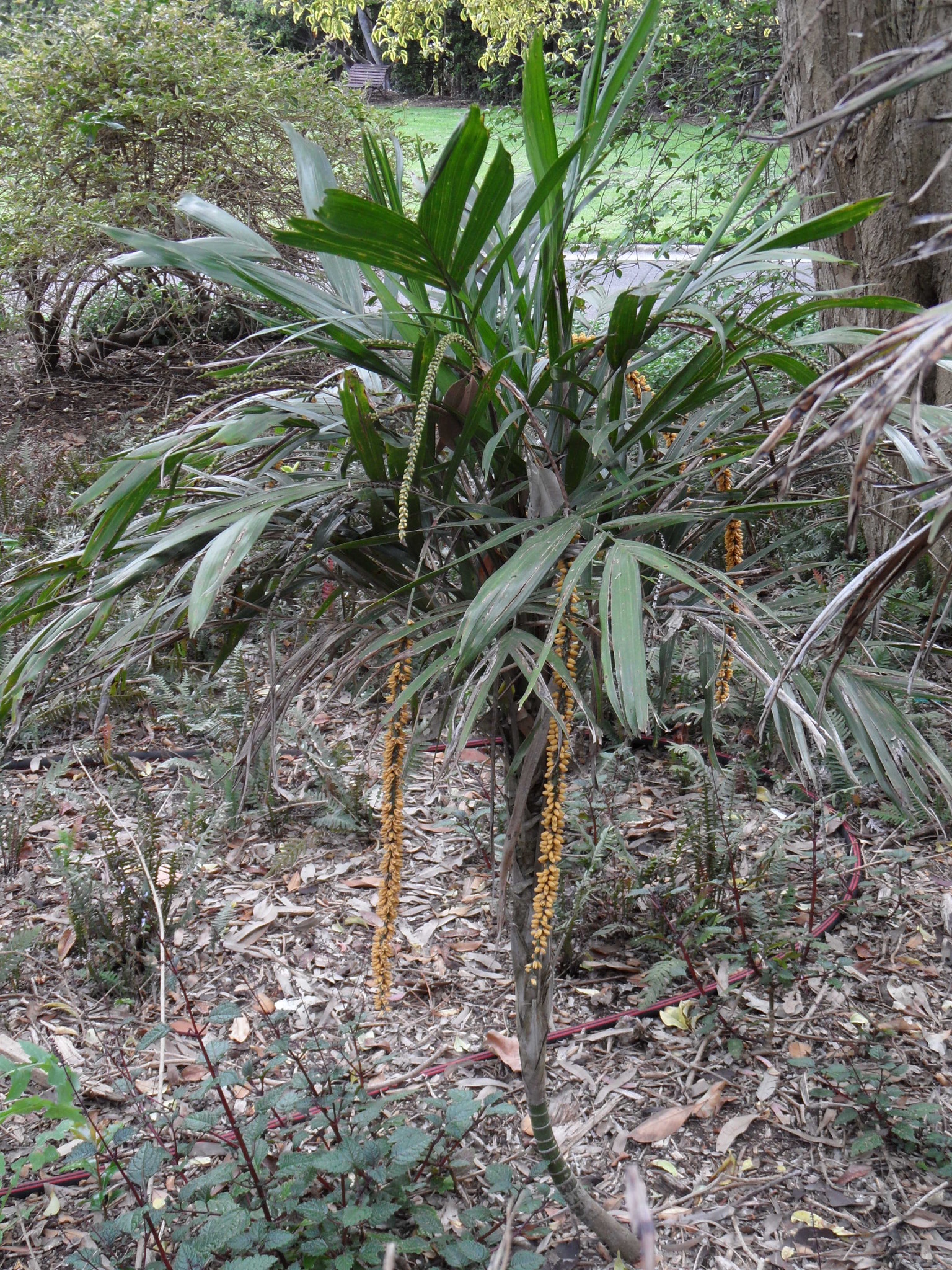
Greek linon – net, spadix – palm branch, an obscure reference to tangling.
Small solitary or clustering spineless and toothless palms. Trunks slender, cane-like, green, conspicuously ringed, occasionally swollen at the base. Crownshaft hardly developed. Leaves feathershaped or occasionally cleft, arching. Leaf sheaths splitting opposite the petiole. Leaf stalk short to long. Leaflets of irregular size, the terminal ones generally united. Flowers unisexual, both sexes on the same tree. Inflorescence unbranched, spike-like, pendulous. Fruit ellipsoidal to spindle-shaped, red or yellow, hanging as if on strings, each 1 seeded. [Bacularia F. Muell.]
Occurs naturally in rainforest.
Excellent small palms for a sheltered position.
Fresh seed and, in the clustering species, from suckers.
The crown 'cabbage' is edible; stems of L. monostachya were once used as walking sticks.
Small palms with narrow, ringed, cane-like stems and feather-shaped leaves with leaflets of irregular size. Flowers and fruit borne on long pendulous spikes.
11 species from Australia (7 species) and New Guinea.
Dowe & Irvine (1997).
Source: (2005). Arecaceae. In: . Horticultural Flora of South-eastern Australia. Volume 5. Flowering plants. Monocotyledons. The identification of garden and cultivated plants. University of New South Wales Press.
